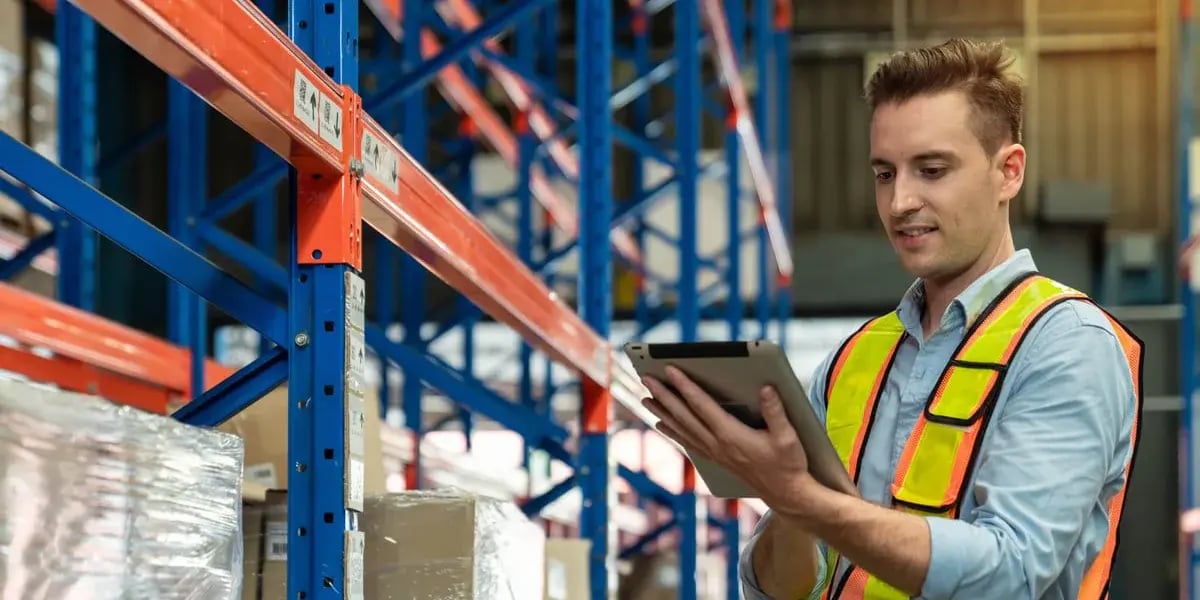
Last update: 15.07.2025
In this blog:
- About Deliver Europe 2025
- The growing importance of cross-border delivery
- What makes a great delivery experience?
- Rethinking returns management
- Elevating the post-purchase experience
- The tech backbone of modern logistics
- Major themes from day one at Deliver Europe
- Adapting to change in logistics
- Further reading: Delivery FAQs
About Deliver Europe 2025
Deliver Europe 2025 wasn’t just another event on the calendar, it was a gathering of diverse minds and forward thinkers shaping the logistics landscape. It’s always energizing to step into a room where innovation takes center stage and conversations flow freely, from tackling cross-border logistics to redefining the post-purchase experience. This year’s event underscored one truth abundantly clearly: adapting to change isn’t optional, it’s absolutely vital for staying competitive.
Through this piece, I want to share highlights from the event and reflect on key discussions that resonated deeply with me. These insights aren’t just big-picture concepts; they hold actionable ideas and strategies you can bring back to your business. Whether you’re managing cross-border deliveries or rethinking customer engagement, there’s something here for everyone.
The growing importance of cross-border delivery
It’s no surprise that cross-border logistics sparked lively conversations throughout the event. The challenges are well-known by anyone managing international shipping, but the potential opportunities are equally exciting.
Challenges in cross-border logistics
Multiple attendees I chatted with shared frustrations about the complexities of global shipping. Regulations, varying tax systems, and differing carrier standards create significant hurdles that slow growth for many businesses. What stood out most was the collective emphasis on finding ways to simplify these processes so businesses can scale across borders more efficiently.
Opportunities with technology
We saw some incredible demonstrations of how technology is stepping up to meet these cross-border challenges head-on. Sophisticated delivery management platforms, for example, are streamlining customs processes and allowing real-time management of multi-carrier networks. One retailer I spoke with shared how moving to a tech-enabled solution not only cut delivery times but also boosted customer satisfaction scores by double digits.
The takeaway is simple but powerful: invest in the right tools, and you’re no longer navigating international complexity blindfolded. Instead, you’re positioning your business to succeed on a global scale.
What makes a great delivery experience?
One theme that surfaced repeatedly was the shift from purely functional deliveries to more personalized experiences. And it makes sense, doesn’t it? Customers expect more than just speed; they want transparency, trust, and choices that fit seamlessly into their lives.
The ingredients of a stellar delivery experience
- Speed – Consumers value fast delivery options, whether same-day or next-day shipping.
- Real-time tracking – Providing clear, real-time updates on the shipment’s status fosters trust between the brand and its customer.
- Flexible options – Offering delivery windows, pick-up points, or lockers ensures a smoother experience tailored to individual needs.
Beyond the basics, the role of technology in enabling these experiences was another key focus. Advanced platforms are empowering businesses to scale fast while maintaining these customer-first qualities.
Hearing a small-business owner share how taking control of their delivery process led to a 30% boost in customer loyalty was inspiring. It’s that type of tangible impact that confirms why attention to the delivery experience matters.
Rethinking returns management
Returns aren’t just a backend hassle anymore; they’ve become an integral piece of the customer experience puzzle. It was fascinating to see how much the conversation at Deliver Europe has shifted to treat returns as a retention opportunity rather than a necessary evil.
Best practices shared directly with attendees
- Clear policies – Customers are more confident in purchasing when returns are straightforward to understand.
- Accessible options – Drop-off points, pre-paid labels, and paperless options make returns user-friendly.
- Speedy refunds or exchanges – Faster processing increases the likelihood of retaining customers after a return.
The tools driving these outcomes were another focus. A participant in the fashion industry shared how implementing a cloud-based returns system eliminated manual tracking errors and drastically cut down processing times. Would you believe that their customers began to leave positive reviews about the return experience itself? It’s proof that even difficult interactions can be turned into positive touchpoints.
Elevating the post-purchase experience
The sessions on post-purchase engagement immediately struck a chord with me. It’s a reminder that the customer relationship doesn’t stop once the package hits their doorstep. If anything, that’s the moment to strengthen it further.
What a memorable post-purchase experience looks like
- Regular updates – Customers appreciate being kept in the loop with clear, proactive communication.
- Seamless returns – There it is again, that connection between easy returns and long-term trust.
- Tailored engagement – Use customer data wisely to follow up with relevant recommendations or product-use guides.
Each of these elements plays a role in extending the customer relationship. I heard from businesses that have implemented simple but effective post-purchase strategies, leading to measurable increases in customer retention. These discussions reinforced the idea that improving post-purchase interactions is as critical as refining pre-purchase ones.
The tech backbone of modern logistics
The conversations at Deliver Europe about delivery management software emphasized how integral technology has become for staying efficient and competitive. From automating manual processes to providing real-time visibility, these tools are revolutionizing logistics.
Benefits we can all relate to
- Streamlined operations: Minimizing manual interventions saves time and reduces human error.
- Better visibility: Every stakeholder (from business to consumer) is kept informed through shared tracking updates.
- Cost savings: Intelligent carrier selection ensures you get the best value without compromising quality.
Many attendees shared similar experiences of how these innovations are simplifying complexity and driving better outcomes. For anyone looking to remain competitive in an evolving market, the consensus was clear: technology is no longer secondary, it’s essential.
Major themes from day one at Deliver Europe
Without a doubt, the following trends signal where our industry is headed:
- Cross-border logistics demand smarter solutions and collaboration.
- Customer-centric strategies are raising the bar for delivery speed, transparency, and personalization.
- AI and Out-of-Home methods (like lockers and parcel stations) are becoming mainstream.
- Sustainability initiatives need continued focus on reducing logistics’ environmental footprint.
Each of these conversations reinforced the urgency to innovate. And just like many I spoke with during the event, my biggest takeaway was simple yet profound—we must adapt and evolve to meet these demands head-on.
Adapting to change in logistics
Deliver Europe 2025 was a reminder of both the challenges and vast opportunities within logistics today. Whether you’re looking to optimize cross-border operations, elevate customer experiences, or improve returns management, the right tools and approaches can help your business thrive amidst rapid changes.
If you’re ready to lead in logistics innovation, reach out to nShift today.
It’s all in the delivery
From checkout to emissions, nShift gives you full control of delivery management at every step — with branded experiences, smarter shipping, and access to 1,000+ carriers.
Explore the nShift platform.jpeg?width=1200&length=1200&name=Image%20(4).jpeg)
Further reading: Delivery FAQs
What were the key takeaways from Deliver Europe 2025?
Highlighted insights include the importance of cross‑border logistics, personalized delivery experiences, smarter returns management, robust post‑purchase engagement, and the tech revolution shaping modern logistics.
Why is cross‑border delivery becoming more important for retailers?
Global shipping demands efficient customs handling, carrier coordination, compliance with regulations, and use of tech platforms to scale internationally.
How can technology simplify international shipping?
Advanced delivery platforms automate customs, facilitate multi‑carrier management, enable real‑time tracking, and cut delivery times—leading to better customer satisfaction.
What defines an exceptional delivery experience?
Speed (same‑day, next‑day), real‑time shipment updates, flexible delivery options (time windows, lockers/pick‑ups), and personalized post‑purchase engagement.
How do flexible delivery options impact customer satisfaction?
Offering choices like delivery windows or parcel lockers boosts convenience, trust, and loyalty—e.g., one retailer saw a 30% uplift in loyalty by improving delivery control.
Why should retailers rethink returns management?
Easy, transparent returns transform post‑purchase into a retention tool. Clear policies, prepaid labels, drop‑off points, and fast refunds can turn returns into a customer satisfaction boost.
What are best practices for managing returns efficiently?
Provide clear return terms, multiple drop‑off channels, automated tracking systems, and ensure swift refunds or exchanges to build trust.
What makes a great post‑purchase experience?
Consistent updates, seamless returns, use of data to offer tailored follow‑ups like product tips or relevant upsells use retention strategies highlighted in the blog enterprisetimes.co.uk.
How do logistics technologies improve operational efficiency?
By automating carrier choice, label printing, and tracking, businesses reduce manual work, errors and cut costs—all while giving stakeholders real‑time visibility.
What industry trends emerged from Deliver Europe?
Top themes include smarter cross‑border processes, customer‑centered delivery design, wider adoption of AI and out‑of‑home delivery (lockers), and stronger focus on sustainability.
Why must businesses adapt to change in logistics now?
The rapid shift in consumer expectations and global logistics complexity demands proactive investment in tech, transparency, and flexible delivery models to stay competitive.

Author
Fabian Riegel
E-commerce Director
Fabian Riegel drives innovation across the nShift delivery and post-purchase solutions. With deep expertise in carrier connectivity, checkout optimization and customer experience, Fabian helps retailers and brands turn delivery into a growth lever.

About the author





